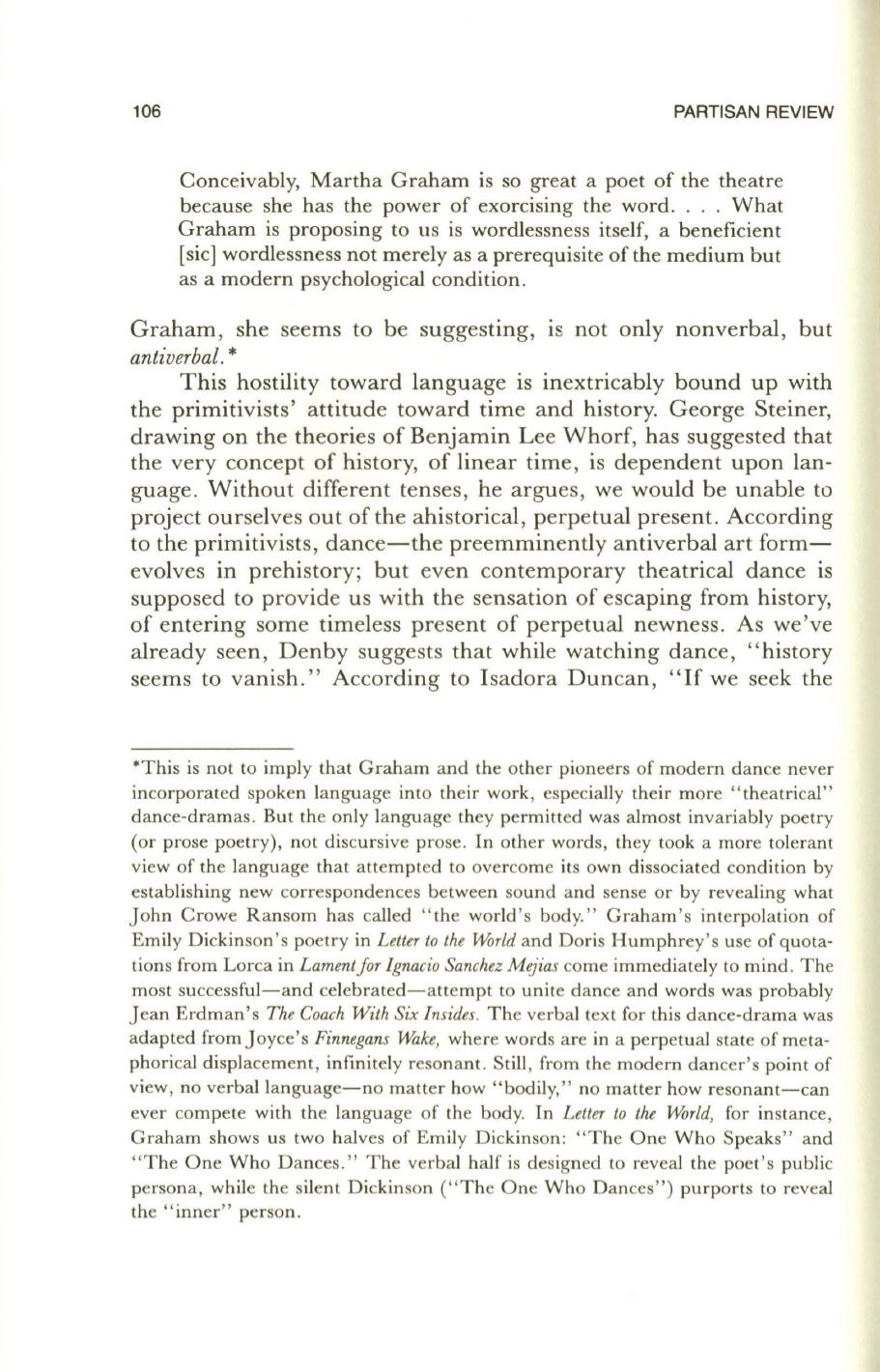
106
PARTISAN REVIEW
Conceivably, Martha Graham is so great a poet of the theatre
because she has the power of exorcising the word.... What
Graham is proposing to us is wordlessness itself, a beneficient
[sic
1
wordlessness not merely as a prerequisite of the medium but
as a modern psychological condition.
Graham, she seems to be suggesting,
IS
not only nonverbal, but
antiverbal.
*
This hostility toward language is inextricably bound up with
the primitivists' attitude toward time and history. George Steiner,
drawing on the theories of Benjamin Lee Whorf, has suggested that
the very concept of history, of linear time, is dependent upon lan–
guage. Without different tenses, he argues, we would be unable to
project ourselves out of the ahistorical, perpetual present. According
to the primitivists, dance-the preemminently antiverbal art form–
evolves in prehistory; but even contemporary theatrical dance is
supposed to provide us with the sensation of escaping from history,
of entering some timeless present of perpetual newness. As we've
already seen, Denby suggests that while watching dance, "history
seems to vanish." According to Isadora Duncan,
"If
we seek the
"This is not to imply that Graham and the other pioneers of modern dance never
incorporated spoken language into their work , especially their more "theatrical"
dance-dramas. But the only language they permitted was almost invariably poetry
(or prose poetry), not discursive prose. In other words, they took a more tolerant
view of the language that attempted to overcome its own dissociated condition by
establishing new correspondences between sound and sense or by revealing what
John Crowe Ransom has called "the world's body." Graham's interpolation of
Emily Dickinson 's poetry in
Letter to the J#Jrld
and Doris Humphrey's use of quota–
tions from Lorca in
Lamentjor Ignacio Sanchez Mejias
come immediately to mind. The
most successful-and celebrated-attempt to unite dance and words was probably
Jean Erdman's
The Coach With Six Insides.
The verbal text for this dance-drama was
adapted from Joyce's
Finnegans H-&ke,
where words are in a perpetual state of meta–
phorical displacement, infinitely resonant. Still, from the modern dancer's point of
view, no verbal language-no matter how "bodily," no matter how resonant-can
ever compete with the language of the body. In
Letter to the J#Jrld,
for instance,
Graham shows us two halves of Emily Dickinson: "The One Who Speaks" and
"The One Who Dances." The verbal half is designed to reveal the poet's public
persona, while the silent Dickinson ("The One Who Dances") purports to reveal
the "inner" person.


